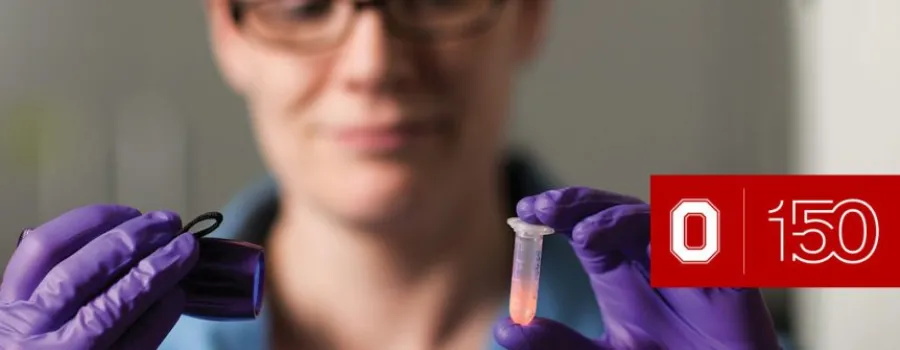
Jessica Winter is a professor with the William G. Lowrie Department of Chemical and Biomolecular engineering at Ohio State. She is a well-known leader in nanobiotechnology with applications to cancer and has invented materials used in cancer detection and research.
Through her research, she developed methods to tightly pack multiple nanoparticles in polymer carriers so that their properties could be multiplied. This approach led to her development of MultiDot, a group of semiconductor nanoparticle quantum dots that allow researchers to track tagged molecules. In biomedical applications, researchers can attach the MultiDot to specific cell structures and better identify and understand disease progression. A product variation called Magdot adds magnetic particles to enable separation and manipulation of cellular biomarkers.
While she was undergoing treatment for breast cancer, she started a company, Core Quantum Technologies along with Gang Ruan, a research scientist and Kunal Parikh then an undergraduate student. CQT commercialized her research and focuses on a nanoparticle diagnostic that matches cancer patients to therapies, allowing patients to become fully informed about the best possible treatments for their disease.
Winter has received many accolades for her work including Ohio State’s Early Innovator of the Year, TechColumbus Innovator of the Year, Columbus Business First 40 under 40, and Columbus Business First 20 People to Know in Technology. In addition, she has received the American Chemical Society Rising Star Award and the Golden Mouse Trap Engineering Rising Star Award; she is a fellow of the AAAS, AIMBE, and senior member of the IEEE and AIChE.
Figure 1: Detection of Her-2 biomarkers in metastatic breast cancer patients using MultiDots in collaboration with researchers at the OSUCCC James Cancer Research Hospital. White color indicates expression of this breast cancer biomarker that is linked with disease aggressiveness. Patients with this marker can be targeted for treatment with the drug trastuzumab.
Figure 2: MultDots for leukemia detection (orange) compared to current clinical gold standard (black) in a flow cytometry histogram. MultiDots increase positive signal (right) while also decreasing negative signal (left), which would could lead to false positives. Thus, MultiDots increase diagnostic sensitivity for detection by up to 1 order of magnitude.
Figure 3: Winter and graduate student Aaron Short.
Figure 4: Always a Buckeye! Winter received treatment for breast cancer at the James Cancer Research Hospital. Shown here with her son.